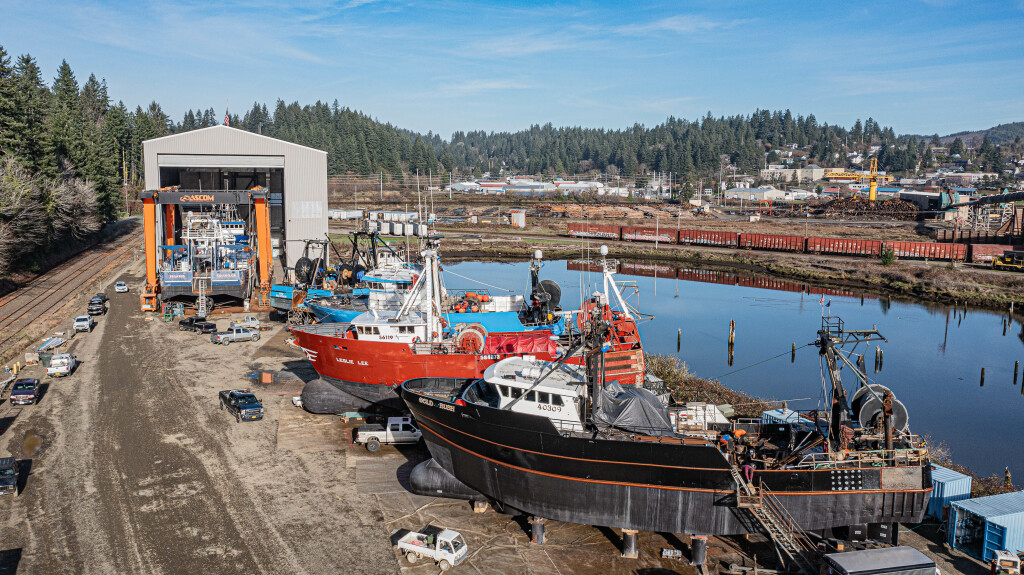In December, the Port of Toledo Shipyard had five offshore draggers lined up along the shore for repairs and one inside the Toledo, Ore., boatyard’s new fabrication shop. All but one of the vessels are 90 feet or over.
“This is the most big boats out of the water since we’ve got the big travel lift,” said the boatyard’s Mike Lee. That would be an Ascom 660-ton travel lift that went into service in 2016.
Inside the 150-foot-deep and 85-foot-wide fabrication shop was the 98-foot Seeker, a pollock and whiting boat that had a kort nozzle and single-blade rudder when she came into the fabrication shop. She will go back in the water with a new Nautican nozzle and triple-rudder system. The boatyard was reworking the propeller to fit the nozzle.
The Nautican nozzle “is a little more aerodynamic, and they’ll gain more thrust,” says Lee. “It depends on who you talk to, but you gain from 5 to 15 percent more just by changing the nozzle and propeller.” The Seeker was also receiving a paint job and minor welding.
Immediately outside the fabrication shop and in the slings of the Ascom travel lift was the 98-foot Pegasus, followed by the 73-foot Bay Islander, 90-foot Predator, 98-foot Leslie Lee and the 99-foot Gold Rush. All the boats are local and fish off the Oregon and Washington coasts, as well as Alaska, except for the Gold Rush, which is based in Kodiak and fishes in Alaska.
The Pegasus needed painting, zincs and some minor welding. Last year, the Port of Toledo Shipyard sponsoned the Pegasus from 98' x 26' to 98' x 42'.
The Bay Islander needed worn shafting replaced, rudder repairs and bottom paint. The Predator had its wave walls that are built on the bulwarks, extended further aft “to keep water off the crew,” Lee says. The Predator is the same boat that was hauled in November 2018 at the Port of Toledo Shipyard to have 60 feet of keel and about half the bottom plating replaced, after she hit rocks off Dutch Harbor, Alaska. The Predator went back in the water in July 2019.
The 98-foot Leslie Lee was in for bottom plating and zincs and an enlarged transducer cover of about 8' x 2" that will allow the installation of larger transducers. The 99-foot Gold Rush was having general maintenance and being painted from the cap rail to the keel. All the boats should be back in the water by mid-January.
Lee says since the fabrication shop was built, it has helped bring more business to the Port of Toledo Shipyard, but “so far we haven’t found the capacity for the shop.”
The 125' x 34' crabber Kiska Sea is the largest vessel hauled inside the building. Lee figures a 130' x 42' boat might be the largest for the building, and if business continues to grow, he should find out soon enough.







